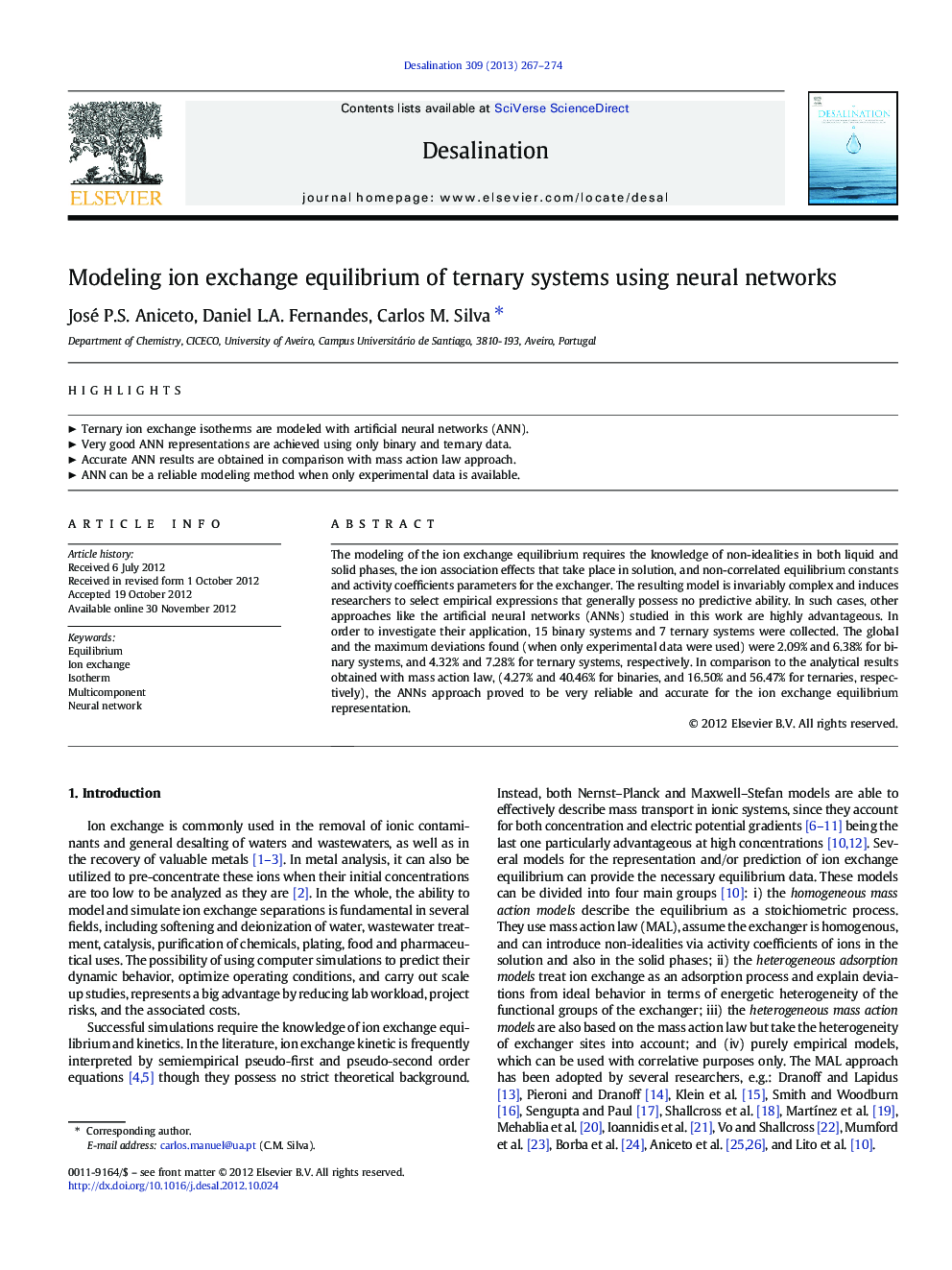| Article ID | Journal | Published Year | Pages | File Type |
|---|---|---|---|---|
| 624087 | Desalination | 2013 | 8 Pages |
The modeling of the ion exchange equilibrium requires the knowledge of non-idealities in both liquid and solid phases, the ion association effects that take place in solution, and non-correlated equilibrium constants and activity coefficients parameters for the exchanger. The resulting model is invariably complex and induces researchers to select empirical expressions that generally possess no predictive ability. In such cases, other approaches like the artificial neural networks (ANNs) studied in this work are highly advantageous. In order to investigate their application, 15 binary systems and 7 ternary systems were collected. The global and the maximum deviations found (when only experimental data were used) were 2.09% and 6.38% for binary systems, and 4.32% and 7.28% for ternary systems, respectively. In comparison to the analytical results obtained with mass action law, (4.27% and 40.46% for binaries, and 16.50% and 56.47% for ternaries, respectively), the ANNs approach proved to be very reliable and accurate for the ion exchange equilibrium representation.
► Ternary ion exchange isotherms are modeled with artificial neural networks (ANN). ► Very good ANN representations are achieved using only binary and ternary data. ► Accurate ANN results are obtained in comparison with mass action law approach. ► ANN can be a reliable modeling method when only experimental data is available.
